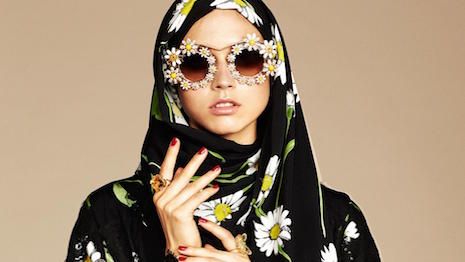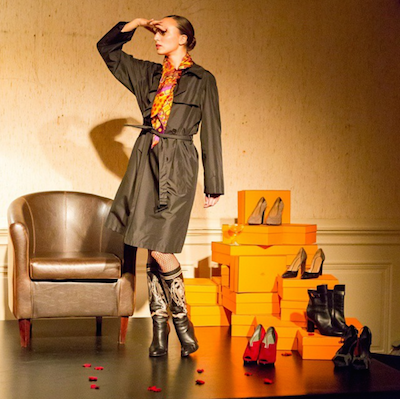The luxury sector has an average Brand Intimacy Quotient of 15.3, a figure considerably lower than the median of 28.7 seen for other United States industries ranked by MBLM’s annual Brand Intimacy Report and Rankings.
MBLM’s top three industries for brand intimacy in the U.S. include automotive, media & entertainment and retail, with luxury, a sector commonly associated with passion points and brand enthusiasm, coming in at 14th, beating out only travel. In its report, MBLM suggests that geopolitical strife, economic instability and political fallout may all be factors proving harmful to how the luxury category is perceived by U.S. consumers.
The full, interactive MBLM report details how emotions influence brand relationship in the U.S., Mexico and the United Arab Emirates. The report considers 15 categories: automotive, media & entertainment, retail, technology & communications, consumer goods, financial services, apparel, fast food, health & hygiene, beverages, hospitality & theme parks, apps & social platforms, insurance & investing, luxury and travel.
Intimacy of luxury
The Brand Intimacy Report 2017 examined key attributes to determine which brands have built a relationship based on positive feelings and associative key attributes. Using six markers, such as fulfillment, identity and nostalgia, and judging the strength of such bonds, MBLM identified the character and nature of brand relationships to determine a Brand Intimacy Quotient from 1-100 used to rank performance.
For luxury sentiment in the U.S., indulgence and identity are the top industry archetypes, but in today’s trying economic and social environment, these markers may be falling out of style as consumers are more attuned to current events and causes.
Ranked number one for this year’s Brand Intimacy Report: Luxury is British automaker Jaguar with a quotient score of 38.3. The automaker boasts strong associations with indulgence and is tied with French leather goods maker Hermès for the identity marker.
Jaguar outpaces others in luxury in terms of “fusing” consumers through bonding and sharing although the luxury industry is below average across all stages. Also, Jaguar is the top luxury brand for both men and women between 35 and 64 years of age, across income levels.
Hermès, which performs the best among millennials, and Rolex are listed second and third, respectively. The remaining brands on MBLM’s list include Tiffany & Co., Cartier, Chanel, Gucci and Louis Vuitton.
When pitted against Chanel, Hermès leads in nearly all archetypes such as fulfillment, identity and enhancement. The two French maisons tie for nostalgia and ritual markers, while Chanel ranks higher in indulgence.
Although Chanel is higher on the indulgence scale, 10 percent of consumers are more willing to pay 20 percent higher for Hermès goods than those from Chanel.
Different sentiments
In the Mexican market, luxury brand intimacy fares higher than in the U.S. with a quotient of 26.9, just shy of the industry average of 29.6 across the 15 categories. Not surprisingly, the archetype most associated with luxury is indulgence, given Mexico’s luxury market grew by an estimated 8 percent in 2016.
Not surprisingly, the archetype most associated with luxury is indulgence with Chanel taking the top spot with a quotient of 44.5, followed by Cartier and Prada. The list also included Louis Vuitton, Salvatore Ferragamo and Tane, a Mexican silversmith.
Out of the three markets considered, luxury performed the best in the UAE with a brand intimacy quotient of 28.7 compared to the industry average of 29.4. Similar to Mexico, indulgence is the archetype most associated with luxury, followed by identity for consumers in the UAE.
MBLM found that Louis Vuitton is the top brand in the luxury category with a Brand Intimacy Quotient of 53.9, placing the French brand as the eighth-most intimate brand overall for the market and the only luxury brand to break into the Top 30.
Chanel follows in second place as do Michael Kors, Prada, Dolce & Gabbana, Cartier, Giorgio Armani, Dior and Hugo Boss.
As a whole, the Middle Eastern luxury market in 2015 was valued at $8.9 billion and is estimated to grow by 2 to 3 percent through 2020.
Given Middle Eastern consumers’ penchant for brands in the category, luxury brands have made a consistent effort to embrace the market and its sentiments.
For example, Dolce & Gabbana, ranked fifth by MBLM, launched its first collection geared exclusively toward Muslim women.
The Dolce & Gabbana Abaya fall/winter 2016-17 collection included a range of abayas and hijabs in the label’s bright and colorful prints. International interest in high-fashion labels has resulted in brands embracing cultural differences through product output such as beauty products in a variety of shades and clothing options (see story).

Look from Dolce & Gabbana’s first abaya collection
Also, online retail group Yoox Net-A-Porter entered a joint venture with the aim of becoming the leading luxury ecommerce player in the Middle East.
This joint venture, in partnership with Mohamed Alabbar’s Symphony Investments, will manage all of YNAP’s multi-brand activities in the region, as well as some of its monobrand ecommerce sites. The Middle East is a fast growing market for luxury, and Yoox Net-A-Porter seeks to benefit from the region’s concentrated population of ultra-wealthy individuals and its digitally savvy residents (see story).
from Jewelry – Luxury Daily https://www.luxurydaily.com/cautious-us-spending-impacting-luxury-sentiment-as-uae-intimacy-quotient-booms-mblm/
via Your #1 Source to Finding Luxury & Designer Goods, Handbags & Clothes at or Below Wholesale: Click Here.



No comments:
Post a Comment